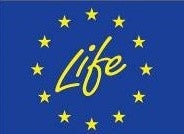EU’s new proposal fails to save Mediterranean
The European Commission published yesterday a new proposal for a multi-annual management plan for fish stocks in the Western Mediterranean Sea. The Commission’s proposal to ensure the recovery of crucial species, such as hake, mullet and shrimps, is a direct follow-up to the #MedFish4Ever ministerial Declaration from 2017. However, in its current state, the proposal … Read more

